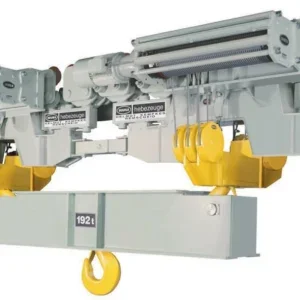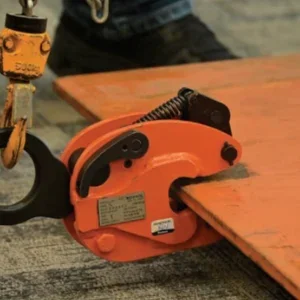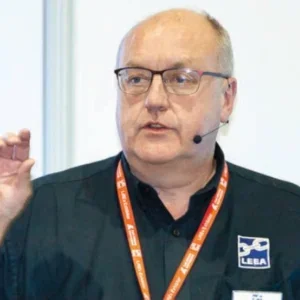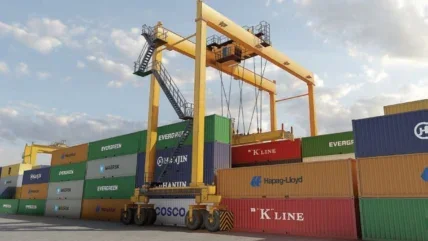
In an industry beset by skilled labour shortages, training has never been more important. And simulators are not only helping address that by upskilling traditional workers – they are breaking down barriers, too.
“You’re able to give a lot of opportunity to people who wouldn’t have considered it before,” says Devon Van de Kletersteeg, product growth manager at CM Labs. “This could be people for whom there would have been a psychological barrier to entry. So, when you’re talking about underserved demographics, those could be minorities, and they could be women as well.
“It breaks down the barrier and says, ‘Hey, listen, this thing that you always thought was for other people, you can do it, too. And it’s not as intimidating as you think it is because here’s the real experience’. It gets you over the hump and makes you start thinking about it properly as a career.”

A simulator can also help management teams identify potential talent from within their existing labour pool. A point of interest he identifies is that the simulator is available 24/7, which can open up new opportunities. Traditionally in a port, operators tend to start their careers on lower value equipment such as an internal transfer vehicle, then progressing to an RTG or reach stacker. Only once the operator has proven their competency does the employer place them in an STS crane. However, a simulator can transform that tried and tested approach.
“What having a training simulator does is, it gives you the opportunity to try out things that you wouldn’t have tried out previously,” says Van de Kletersteeg. “That applies to the individual and it applies to the training managers as well.
“The training managers in some cases may spot individuals who have potential and instead of simply saying, in a traditional setting, ‘let’s try them on that piece of equipment which has low risk,’ now they can say, ‘let’s go with a no risk approach and invite them to come into the training simulator, maybe on an off day or at the end of their shift. Let’s see how good they are at managing certain aspects of operating a crane to kind of pre-vet them for a position.’
“If you find out you have good hand-eye coordination, you’re not afraid of heights, and we think there’s a lot of potential for you, then, all of a sudden, that opens up a whole new career opportunity for you as an individual. We think that is a definite positive on a personal level but also for the organisation because now you’re able to spot people who may have otherwise gone unseen. Now you identify them as the next people to go into a particular training programme.”
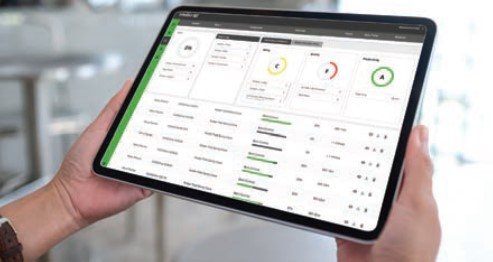
Professionalising the industry
CM Labs also sees simulators playing a role in further professionalising the industry. Van de Kletersteeg cites a recent issue in the Canadian logistics industry, which was faced with a severe shortage of truck drivers.
“The industry associations decided the best way to address this was to try and professionalise the industry a little bit more, and make it so that individuals who come in can aim to achieve certain levels and goals to advance themselves and make it a more codified career,” he says.
“We can see the same thing in ports. If you are willing to invest in a training simulator, that sends a message to everybody coming in that this port terminal operator takes training seriously and takes career development seriously. As an individual going into that organisation, you know you’re not going to be just a number.”
He believes that an investment in a training simulator also sends out other messages. Safety is downstream from training, so procuring a simulator demonstrates that an organisation is investing in both training and safety.
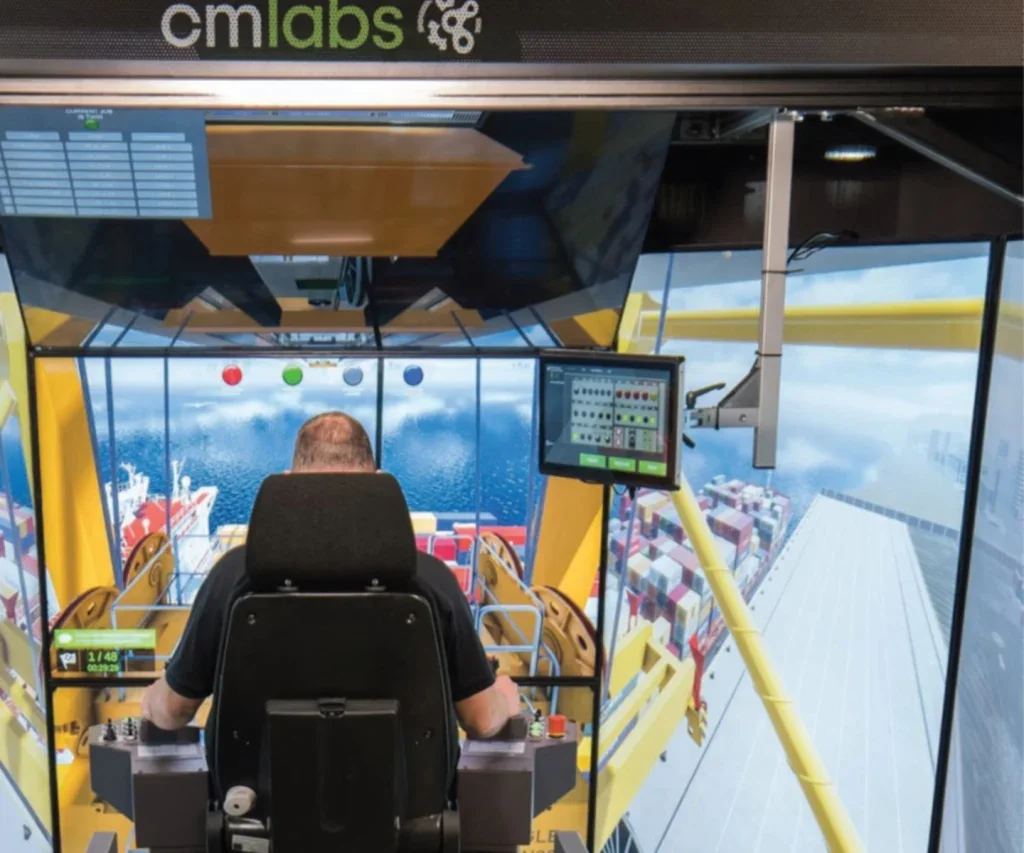
“This tends to have a snowball effect of one feeding into the other,” he says. “The operators will be safer, but it’s not just the operator: it’s everybody on the quay who’s going to be a little bit safer as well.
“It can be a critical part of the whole ecosystem changing. It’s more like creating a culture change. The simulator is that catalyst to culture change because it requires you to think a little bit differently.”
Current trends
While the market for simulators is relatively mature in North America and Europe, it is now starting to grow in other regions.
Van de Kletersteeg feels that, in North America and Europe, the market already understands and acknowledges the benefits of simulator training. “The perception, I think, hasn’t really changed in recent years,” he says. “The convincing arguments were delivered more than a decade ago with respect to simulation training and the value that it brings.”
He notes that there are regional differences in Australia and New Zealand. While also mature markets, they emphasise the use of straddle carriers more in that part of the world. “They’ve got very high standards, but slightly different requirements,” he says. “We’ve done projects over there, including with Patrick Terminals and Flinders Ports.”
Flinders was an early adopter, whereas Patrick Terminals more recently became a CM Labs customer. Winning them over required creating a new hardware solution called the MasterCab. “The idea there is it’s this immersive experience; you sit inside of the simulator, and you’re surrounded,” says Van de Kletersteeg. “It’s the most immersive simulator that we offer.” CM Labs had to completely replicate the working environment experienced by a Patrick Terminals operator.
CM Labs has also seen big changes in the global South, largely driven by international operators wanting to replicate productivity and safety standards from ports in developed markets. “Port terminal operators are going to be global, but also some shipping companies are getting into the mix as well,” says Van de Kletersteeg. “So, you have a global influence over every single region, including developing regions.
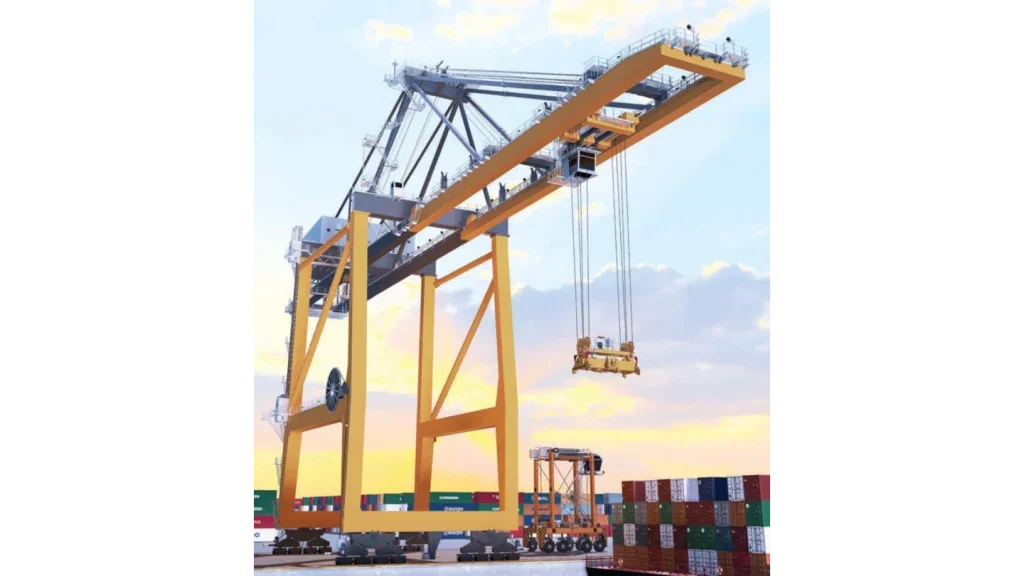
“What they’re looking at is leaping ahead. Think of it like in China when they said, ‘We can either lay telephone lines all over the place like they did in North America, or we can just leapfrog that and go to cell phones and give cell phones to the entire population,’ which is why you see such a high adoption rate. In South America, simulators seem to be that way. You can get people to accelerate their productivity, and safety is definitely a major aspect as well.”
CM Labs has recently seen an uptick in enquiries from this region. They often stem from hearing about the success of simulators in other ports. “We’ve had a bunch of customers come to us and say, ‘We’ve seen simulators, we’ve seen what they can do, and we want that for our port as well.’
“In many cases, they can attribute some of their success to having a training simulator in place and a robust training programme to support it, of course, because the simulator is a tool in a broader ecosystem.”
He adds that this has led to customers travelling to CM Labs’ Montreal offices to find out more about what the simulator can do, and how they can integrate it into their training programme.
Training management
The company has addressed this need with the launch of its SimGuide. “The idea behind SimGuide,” says Van de Kletersteeg, “is that we’ll set you up with a simulator and we’re going to help you understand how to make a curriculum to get people onboarded and to accelerate their learning. That could be someone who doesn’t know how to operate a crane at all or how to operate it in the best possible way. Ports can work with our system and a qualified instructor to develop a training programme to allow them to maximise safety and productivity.”
This also fed into the development of the Intellia suite of training products, launched at TOC Europe 2024. “Training management has become very important in the past couple of years,” says Van de Kletersteeg. “So that’s what was pushing the investment in Intellia. Reporting has been a key part of this – enhancing the metrics that we’re tracking and trying to give, in a very visual manner, information to the instructor to understand how everybody is doing and also treating everybody with a fair hand.”
He feels that this idea of equity is particularly important in terminals with a unionised workforce. In these environments, it is important to ensure that everybody is trained to the same standard – and treated fairly along the way.
“For example, you can have an operator that might take a little bit longer to understand load pendulum,” he says. “And that’s fine, so long as we can identify that early. You can use our software to do that, and you can give them a little bit of remedial training and then finally get them up to the acceptable standard.”
Evolving technology
As port equipment evolves, so do the simulators and associated training platforms.
CM Labs recently acquired artificial intelligence company AI Redefined and will showcase its first tech demo featuring AI at TOC Europe.
“We are looking to enhance our training offering with AI,” says Van de Kletersteeg. “Some people can feel overwhelmed when they get into a simulator and there’s all sorts of stuff going on. We have created an AI helper to really help onboard that student and prevent them from getting stuck. Typically, in port operations, we know the instructor is never too far away, but it does help provide a little bit more independence for the student.
The goal is to ensure the technology remains in step with market needs. “The market is expanding for training solutions as economies develop. As those economies develop, safety and productivity become critical. Even though Europe is a mature market, its needs are evolving.
“Companies no longer just need a simulator for one piece of equipment. They realise they need a full training system to train all of their heavy equipment operators on all of the equipment in the port. And on top of that, they now need a system in place to monitor all of these people, track all their progress, and report back to the health and safety team.
“There’s recognition of the value and the need for simulators. But as technology is evolving, the things that we can do within that market are changing as well. You would think you’d reach a maturity end point, but you don’t because what ends up happening is as you move towards it, the rules of the game change a little bit and now all of a sudden, the customer’s needs are greater.”
Customer advocates
CM Labs is growing by using its existing customers as advocates. “We try and make sure that our customers stay happy with our solution,” says Van de Kletersteeg. “Because what ends up happening is you’ll have a customer that wants to experience the solution, and if you happen to have a customer in the local area or just in the country as well, you can send them on site.”
Sending potential customers to visit a client who already has a simulator is proving to be a great sales tool. “We can tell you all you want about the use case, but there’s nothing quite as good as going to a customer’s site, which is another port – which you may or may not be in competition against – and seeing how they’re using it,” he adds.
Sometimes how the port is using a simulator can still surprise the manufacturer. “In my visit to Port of Tilbury, for example, I noticed that they have it located in their cruise terminal, a beautiful building. And they use it a little bit for outreach as well.
“The big concern in the industry is how do we get that next generation on board? How do we make sure that those 18-year-olds, or actually probably a bit earlier, those 16-year-olds who are considering their career opportunities, start thinking about this as an option?
“Heavy equipment operation obviously has a lot of satisfaction involved with the job. The pay is quite good, and the working conditions are always improving. There’s a very strong urge to get people to start looking in this direction and consider these career opportunities going forward. There’s nothing quite like 10 or 12 shiny screens and a bunch of controls and a motion platform to entice you into wanting to try that out. In Tilbury, they were doing it with local schools.”
Attracting talent
While simulators play a key role in upskilling the workforce, they also help to attract new people into the industry.
“I was visiting a customer on Canada’s east coast in Halifax, and I was there on the day that they brought in an entire classroom of students,” says Van de Kletersteeg. “They all came in and had an opportunity to get 15 minutes on the simulator to try it out. Then they were going to do a port tour and a bus just to kind of understand this is an important part of our infrastructure. The modern world wouldn’t work without being able to move goods around the world, and this is a key part of that. So, I was surprised to see how important a simulator could be, even when not being used in its direct original application.”
Remote operation
This also ties in with the trend of remotely operating lifting equipment.
“I hate to use the term ‘newer generation’ because it sets this dynamic of old versus new,” says Van de Kletersteeg. “But in terms of getting the newer generation to join the workforce, you have to entice them.
“I’ve seen a lot of companies talk about automation from the perspective of the benefits. There’s the ergonomic benefit of working in a remote operation, and it makes it more appealing. People don’t necessarily want to wake up at five in the morning and climb up a ladder that’s 150 feet tall to climb into the cabin of a crane. So, you definitely have a bit of a shift now towards integrating new automation technology that puts the operator in an office setting, which is much more comfortable. That’s where the market is going, and we’re taking our cues from that.”



